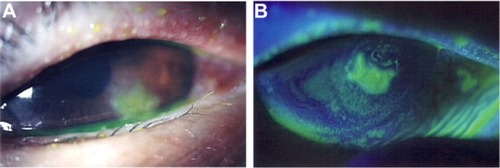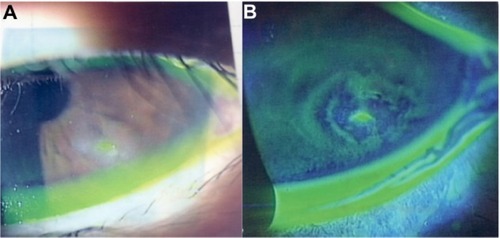Figures & data
Figure 1 Slit lamp microscopic images of the left eye at the time of the initial presentation.

Figure 2 Slit lamp images from 2 months after the start of treatments.

Figure 3 Slit lamp image from 3 weeks after the start of treatments with Mucosta ophthalmic suspension.

